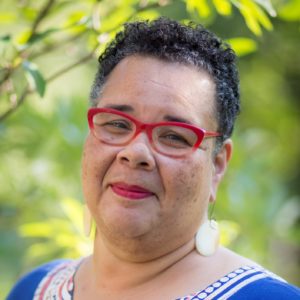white privilege
Select an item by clicking its checkbox
I’ve been interested in the connection between culture and education for most of my adult life. My wife and I spent 8 years in pastoral work in Central Europe, and since 2005 my work with online education has brought me into intercultural spaces that include the intersection of multiple kinds of ...
Training students to identify and traverse the identity politics in the United States begins on the first day of my courses. On day one, I introduce myself, then launch into the syllabus review. In describing the required readings, I hold the book or article in my hand, tell students the ...
My course began with an iconic book by bell hooks and ended, after several other readings, with a beloved text by Parker Palmer. On the last day of class, a white woman student came up to me to tell me how much she enjoyed the course (she had earned an ...
Every semester I stand in front of my classes at my predominantly white state university and argue, “whiteness came into being through more than five hundred years of dominant cultural narratives undergirded by [white] Christianity, laws, and sciences which have proclaimed the innate inferiority of those outside dominant white culture.” ...

Making Sense of Teaching in Difficult Times
Date Reviewed: November 30, -0001
The ten chapters in this volume first appeared as a special issue of Teaching in Higher Education (2013). Each author is situated in particular classroom and institutional contexts ranging from South Africa to Australia, from Denmark to China and Canada, from the United Kingdom to the United States. Their expertise is far reaching. Although none of the contributors are in the areas of theology or religious studies, the questions raised and addressed in this volume center on strategies for effective teaching and learning. Collectively, these chapters supply a snapshot of the challenges and promises facing instructors of higher education. As a result, there are several potentially relevant sites for reflection and application.
Grouped thematically, student-centered chapters highlight raising awareness of White Privilege (chapter 1) and of global citizenship through on-campus threshold-crossing experiences (chapter 3), undergraduate research (chapter 4), and social justice (chapter 8). More instructor-centered chapters confront the role of self-reflective practices (chapter 2), and of online education (chapter 10). Curricular chapters focus on inter-disciplinarity in an engineering curriculum (chapter 5), on the impact of problem-based learning on Chinese students undertaking higher education outside of their homeland (chapter 6), and on assessment practices (chapter 9). Of all of the chapters in this volume, “Reframing teaching relationships: from student-centered to subject-centered teaching,” would be the most suitable starting point for the reader of the Wabash Center’s online reviews. Although this chapter is situated at the center of the volume (chapter 7), it serves as the organizing chapter because it tackles an issue raised more specifically in the other chapters. Employing frame theory, the authors respond to questions of self-identity and the teaching relationship by advocating subject-centered learning.
The strength of the volume rests with the particular contribution of each individual chapter. Offering a specific perspective in a local context, each author works within cleanly defined theoretical boundaries and approaches, and presents an argument worthy of further consideration and discussion. Despite this strength, however, the overall coherence of the volume suffers from the lack of a formal, introductory chapter and a final, concluding chapter. An additional chapter at the fore could justify the order of presentation of the collection (thematically topically, or through some other means) and facilitate the act of reading by explaining criteria for selection and inclusion; a closing chapter might indicate possible applications of the issues in other contexts and introduce new approaches or questions moving forward. The lack of these critical organizing chapters at the opening and closing of the volume requires the reader to determine the contours of coherence across the chapters and to impose frameworks for interpretation.


